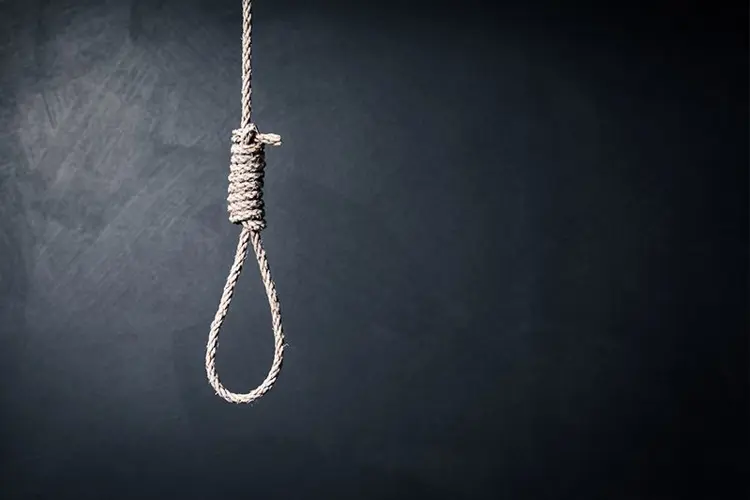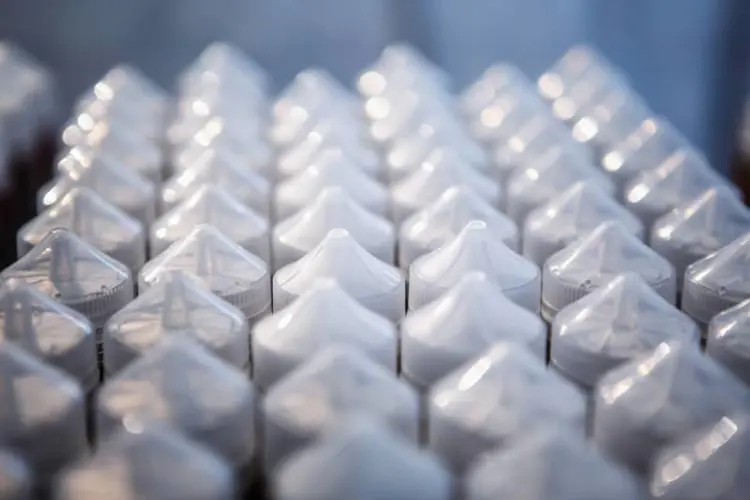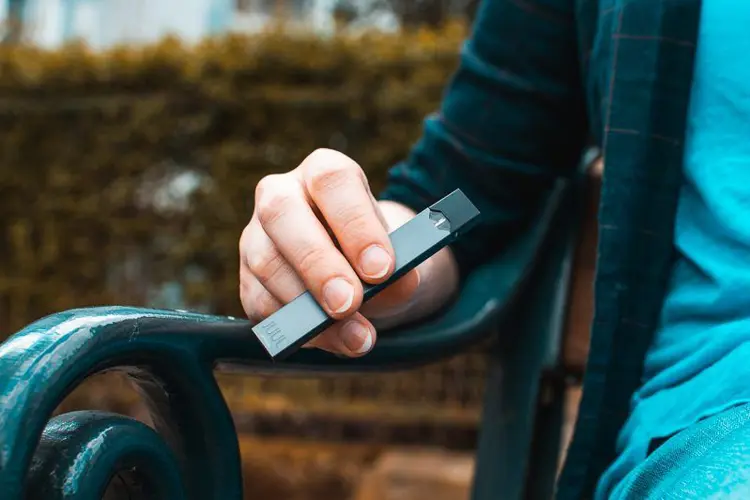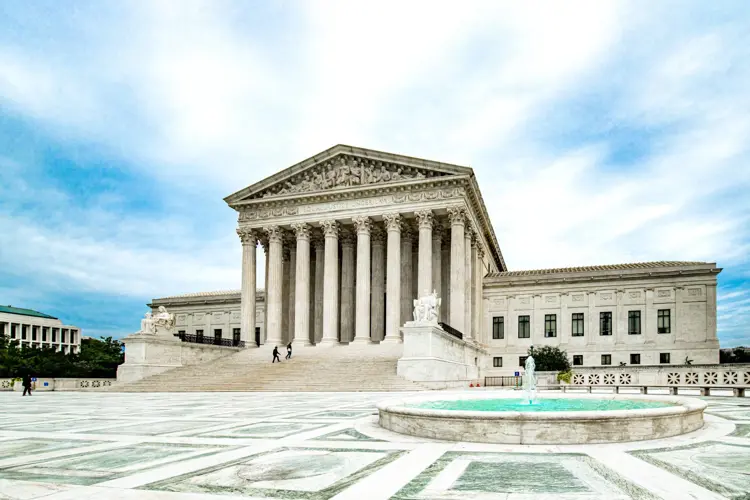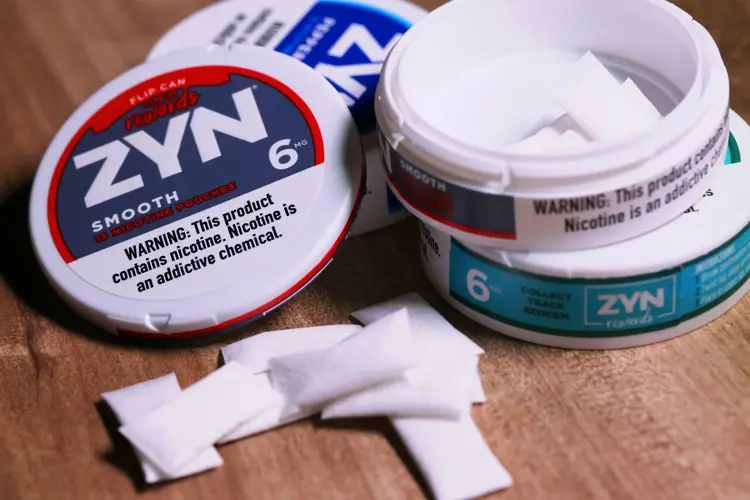Under pressure from a federal court, the FDA has finally released vaping industry guidance for filing premarket tobacco applications (PMTAs). And depending on what happens in the federal lawsuit in Maryland, vape manufacturers could be forced to submit multi-million dollar applications in as little as four months or be forced out of business.
No vape company has ever submitted a PMTA, and the FDA Center for Tobacco Products has only approved one PMTA for an inhalable nicotine product during its 10 years in existence. That product, Philip Morris International’s heat-not-burn tobacco device IQOS, is not an e-liquid vaping device. The IQOS PMTA was approved this April, after a review process that lasted more than two years.
Since only a handful of companies would dare to risk millions of dollars on applications that would probably be denied, we could be facing the end of the legal independent vaping industry in the very near future. That would mean tens of thousands of employees losing their jobs, and perhaps millions of vapers either turning to the black market for e-liquid and supplies, or migrating back to cigarettes.
At this point, the vaping industry is depending on its perpetual enemy the FDA to fight this legal battle, or the industry will be forced to immediately submit mountains of paperwork most companies aren't capable of doing properly only to be rejected by regulators unprepared to review it. No one wants this to happen except the anti-vaping groups that brought the lawsuit against the FDA.
But let’s start at the beginning.
On July 28, 2017 then-FDA Commissioner Scott Gottlieb announced a bold “comprehensive strategy” for addressing tobacco and nicotine. Among other initiatives (like reducing the nicotine in cigarettes), he announced a four-year delay of the 2018 PMTA deadline for manufacturers of “deemed tobacco products” — time that would offer breathing room to businesses as they prepared. And Gottlieb promised the vape industry would soon have “a firm foundation of rules and standards for newly-deemed products.”
Almost two years later, when Gottlieb left office earlier this year, the 2022 PMTA submission deadline had been moved up a year to 2021 for flavored vaping products, and there were still no published standards. Even worse, the country was in the midst of a moral panic over vaping, in part stoked by Gottlieb’s desire for flattering news coverage.
The AAP lawsuit
The same groups largely responsible for instigating the vaping panic — the American Academy of Pediatrics (AAP), American Cancer Society Cancer Action Network, American Heart Association, American Lung Association, Campaign for Tobacco-Free Kids, and Truth Initiative — filed a lawsuit in March 2018 demanding that the FDA reinstate the original deadline and begin enforcing the requirement for premarket review of all deemed products that were on the market as of Aug. 8, 2016 (all products that came after that date are de facto illegal without FDA approval).
Many in the vaping industry forgot about the lawsuit after it was filed. It was just one more bizarre moment in an endless series of incomprehensible events. Because courts tend to defer to federal agencies in such matters, and allow them to regulate as they see fit, industry insiders weren’t overly alarmed about the lawsuit.
But last month federal District Court Judge Paul Grimm ruled for the AAP and the other anti-vaping plaintiffs, and said that the FDA’s PMTA delay amounted to an “abdication” of the agency’s regulatory responsibility. In a decision that read like a screed by a nicotine prohibitionist, Grimm ruled that the FDA should prepare to begin reviewing premarket applications soon.
The judge gave the plaintiffs and the FDA two weeks each to submit their own plans for a timeline. Several interested parties planned to file motions to intervene in the case, including the Right to be Smoke-Free Coalition, Imperial Brands (Blu), Altria, JUUL Labs, NJOY, and consumer advocates CASAA [disclosure: I am on the CASAA board]. But Judge Grimm denied the interventions before the motions had even been filed. (This decision may be appealed.)
The AAP and its co-plaintiffs asked the judge to force the FDA to begin reviewing PMTAs in 120 days. Under their proposal, once an application is submitted, an applicant could continue to sell the product for one year or until it is approved or denied (whichever comes first).
The FDA responded, asking the judge to “remand the case back to the agency for further action.” However, the agency pleaded that “even if the Court determines to go further, it should not enter the specific relief that Plaintiffs request, and certainly not on the dramatically accelerated timetable they suggest.”
The agency said that any deadline for PMTA submission of less than 10 months would be a disaster for vapers as well as the agency. If the circumstances weren’t so dire, it would be satisfying indeed to see the FDA defend vaping as a public health benefit.
The FDA notes in its brief that dealing with a mountain of hastily produced PMTAs “would ultimately be counterproductive,” and that “ such a precipitous deadline would threaten to abruptly clear the market of e-cigarette products.” The FDA says that shutting down the vaping industry would create a “genuine risk” that former smokers would go back to cigarettes, and quotes FDA Center for Tobacco Products director Mitch Zeller calling that a “public health outcome that should be avoided if at all possible.”
In a few days, the plaintiffs will respond to the FDA motion, and then the judge will consider his final decision. According to the Vapor Technology Association (VTA), the final order from Judge Grimm is probably at least a month away. After that, the FDA has 30 days to file a Notice of Appeal to the 4th Circuit Court of Appeals. The FDA can also seek to have the decision stayed (postponed) during the appeal.
Of course, the FDA doesn’t have to appeal the decision. The agency could let it stand and try to enforce a near-total ban on vaping products. That would result in the growth of a black market that would be impossible for the agency to police. Between internet commerce, inexpensive worldwide shipping, and the easy availability of most necessary ingredients, the new market could be almost as big as the old market — and this time a real Wild West. The FDA would be a laughingstock. The agency understandably doesn’t want that to happen.
FDA finally issues PMTA guidance
The day before filing its brief with the District Court, the FDA finally published the PMTA guidance that was first promised when the agency announced the Deeming Rule in May 2016.
For small vape manufacturers, there is nothing in the guidance to offer hope for survival. The requirements are as complex and stringent as anyone who has read the Deeming Rule would expect. The process is deliberately intimidating for small businesses, intended to make them throw up their hands and walk away.
Completing the studies and analyses necessary to submit a PMTA — whether or not is is successful — will cost much more than almost any vaping manufacturer can afford. There are no sensible standards-based rules to offer reassurance to uncertain e-liquid producers or hardware makers.
For each product submitted, hundreds or thousands of hours of work by scientists, lab techs, and expert researchers and consultants will be required. For example, here is the FDA’s description of the groups that will need to be studied to help determine the population-level effects of a vaping product:
“Considerations in addressing the human health impact of a new tobacco product may include, but are not limited to:
- Tobacco users who may switch from other tobacco products to the new tobacco product;
- Tobacco users and nonusers who, after adopting use of the new tobacco product, may switch to or switch back to other tobacco products that may present higher levels of individual health risk;
- Tobacco users who may opt to use the new tobacco product rather than cease tobacco use altogether;
- Tobacco users who may opt to use the new tobacco product rather than an FDA-approved tobacco cessation medication;
- Tobacco users who may use the new tobacco product in conjunction with other tobacco products;
- Nonusers, such as youth, never users, and former users, who may initiate or relapse tobacco use with the new tobacco product;
- The health effects in users of the new tobacco product; and
- Nonusers who experience adverse health effects from the new tobacco product”
In other words, an e-liquid manufacturer will have to show the FDA that, among many other things, the product is “appropriate for the protection of public health” even though some former smokers may “relapse to tobacco use” by using the submitted e-liquid (which the FDA defines as a tobacco product).
The manufacturer will have to hire a qualified scientist to investigate all of those potential reasons the product could be denied approval, and explain in detail how the benefits will outweigh the costs. And unless other similar studies have examined the exact same product — or one very close to it in content, flavor, and all other properties — the manufacturer won’t be allowed to consider studies of similar products in the application.
“The process outlined remains sophisticated and prohibitively expensive, and it will be extremely difficult for small businesses to satisfy FDA’s requirements,” VTA said in a statement.
The bottom line is that pretty much the only companies able to afford and navigate the PMTA process have “Tobacco” in their names. Aside from JUUL and possibly NJOY (and the largest Chinese manufacturers), no independent vaping manufacturer will be able to handle such a demanding and burdensome regulatory regime.
It’s not certain that even JUUL, with its billions in assets (from Altria’s 35 percent investment last December), would be successful with a PMTA at this point. After all, the company is at the epicenter of the vaping panic, blamed by everyone from tobacco control groups to high school principals for “addicting a new generation” to nicotine. How could JUUL possibly prove that its product wouldn’t cause uptake by nicotine-naive teens? According to the CDC and Truth Initiative, it already has.
Wells Fargo market analyst Bonnie Herzog thinks JUUL will be okay. Herzog is "confident Juul will be able to comply given its resources/access to Altria's legal/regulatory expertise,” according to Convenience Store News. But Scott Gottlieb isn’t so sure. The ex-FDA boss, who still feels the need to weigh in on every decision made by his former agency, said on Twitter that “the crisis created by products like JUUL put this entire segment at grave risk and made it hard to prove a net public health benefit for a JUUL like product.”
But even if a few products are approved, the legal independent industry will die. A handful of products are not enough to sustain a vape shop, which depends on carrying a wide variety of popular e-liquids. And it’s e-liquid that is the profit driver for vaping retailers. How many vapers are going to buy new hardware when they only have four tobacco-flavored e-liquids to choose from? Without lots of e-liquid choices, the market for open-system vaping products will have to go underground. Perhaps some enterprising vape entrepreneur will devise a way around the prohibition, but it’s hard to imagine what it would look like.
Gottlieb claimed in that same Twitter thread that the FDA might consider some novel regulatory system that would give open-system products and vape shops an advantage over the big players like JUUL and the tobacco companies, apparently by applying different standards for the small businesses.
“Question now,” wrote Gottlieb, “is whether FDA could - or should - craft policy distinctions through different regulatory paths that take measure of different use patterns between JUUL like products and open tank systems; or whether that data is even strong enough to merit such an approach.”
Why the ex-commissioner is suggesting this now, instead of during the two years he was in charge of the agency, is a mystery. It’s unlikely that Mitch Zeller’s Center for Tobacco Products — under incredible pressure to regulate vapes to the point of prohibition — will go out of its way to make life easier for the small vaping businesses that make up what the FDA considers a "Wild West." If the CTP was going to do something like that, it would have been during Gottlieb’s first few months at the FDA, before he decided the JUUL fad was an epidemic.
Gottlieb’s Twitter musings notwithstanding, there is no viable pathway in the guidance document for small vape businesses to follow. Even if there were, it’s questionable whether a company that decided now to pursue premarket approval would have time to do the necessary research. Even if the judge let FDA maintain its 2021 deadline for flavored product PMTAs, there probably wouldn’t be enough time — especially if a large number of small manufacturers decided to chase a PMTA at the same time.
And even companies that were already planning to submit applications are probably not prepared to submit them soon. If AAP and its fellow plaintiffs get the four-month deadline they want (or even if the judge sets it at 10 months), companies that were aiming at a 2021 submission are unlikely to be ready in time. That would mean removing their products from the market and surviving on savings while doing research to submit a very uncertain application (and waiting for a decision) later.
"Preparing and satisfying a PMTA is no easy task, with applications that are millions of pages long, costing millions in resources, and requiring significant scientific support,” financial analyst Ryan Tompkins said, according to Convenience Store News. “It is highly likely now that, with the PMTA deadline being brought forward further, small vapor manufacturers would not be able to satisfy the requirements and will need to remove their products from the market.”
Manufacturers with money or credit sufficient to complete a PMTA would probably be wiser spending their millions expanding sales into other countries that have more predictable regulatory systems. While the European Union’s Tobacco Products Directive (TPD) has foolish requirements like a 20 mg/mL limit on nicotine strength and a 10 mL maximum bottle size, it at least spells out what is allowed and what isn’t. And Canada and New Zealand offer an even more reasonable regulatory approach (but smaller markets).
Prohibition by regulation
Even if the FDA successfully appeals the AAP decision, the vaping industry as we know it doesn't have much time left. Whether the PMTAs mandated in the FDA guidance document are due in four months or 24 months, not enough products will be approved and available for sale to sustain vape shops and legal online retailers.
There can be no rapid innovation or growth under such a regime. Even if a company’s second, third and fourth PMTAs cost just a fraction of the first one, no small manufacturer would dare risk hundreds of thousands of dollars on a product that isn’t certain to succeed. That means no new products. This is a regulatory model designed for combustible tobacco, a product that never really changes.
Of course, cigarettes never had to go through this process; they were grandfathered onto the market when the Tobacco Control Act passed. It’s only safer products that will be forced to jump through endless hoops to earn the opportunity to compete with Marlboro and Newport. The Tobacco Control Act and Deeming Rule actually protect cigarettes.
When PMTAs are the only legal route to sell vapor products, e-liquid makers and other small manufacturers will essentially have three choices: sell illegally, sell in other countries, or go out of business. What would be the logic in spending everything you have on a PMTA the FDA could (and probably will) easily dismiss? But entering the black market will cost nothing.
"One has not only a legal but a moral responsibility to obey just laws. Conversely, one has a moral responsibility to disobey unjust laws." -- Martin Luther King, Jr.
The Deeming Rule and PMTA process are more like trolling than regulation. Demanding that small vape entrepreneurs who serve ex-smoking customers produce research showing how their products will affect population-level public health is silliness on a grand scale.
Even more maddening is asking them to prove that their products are “appropriate for the protection of public health” while every convenience store and gas station in America sells thousands of cigarettes every day. That may be an irony that tobacco control zealots and politicians don’t appreciate, but it’s one that the vape industry feels like a punch in the gut every single day.
Assuming there is no last-minute miracle to save the vaping industry — a surprise decision blocking the Deeming Rule in the Pacific Legal Foundation lawsuits, or a win in the Nicopure/Right to be Smoke-Free appeal — this is how the legal industry will end. Within a year or so after the PMTA requirements kick in, FDA-approved vapes will be a few products sold in convenience stores.
But the PMTA process will lead to a robust black market as soon as it takes effect. The FDA doesn’t have the resources or experience to enforce the Deeming Rule. Rather than laying out a simple set of quality and safety principles and issuing a list of prohibited constituents, the FDA has sent an invitation to flout the law to every small vape manufacturer in the country. And many of them will accept the invitation and continue serving their customers in defiance of the FDA.
The Freemax REXA PRO and REXA SMART are highly advanced pod vapes, offering seemingly endless features, beautiful touchscreens, and new DUOMAX pods.
The OXVA XLIM Pro 2 DNA is powered by a custom-made Evolv DNA chipset, offering a Replay function and dry hit protection. Read our review to find out more.
The SKE Bar is a 2 mL replaceable pod vape with a 500 mAh battery, a 1.2-ohm mesh coil, and 35 flavors to choose from in 2% nicotine.
Because of declining cigarette sales, state governments in the U.S. and countries around the world are looking to vapor products as a new source of tax revenue.
The legal age to buy e-cigarettes and other vaping products varies around the world. The United States recently changed the legal minimum sales age to 21.
A list of vaping product flavor bans and online sales bans in the United States, and sales and possession bans in other countries.










